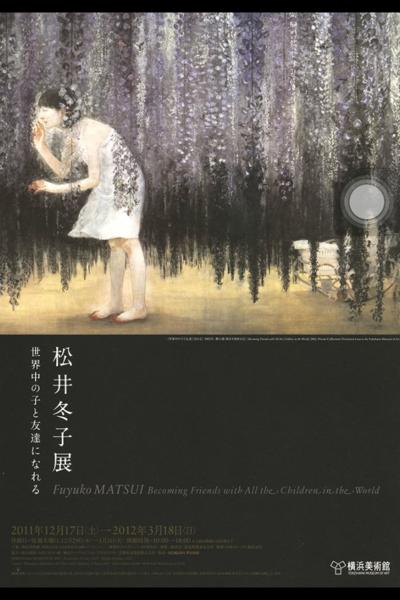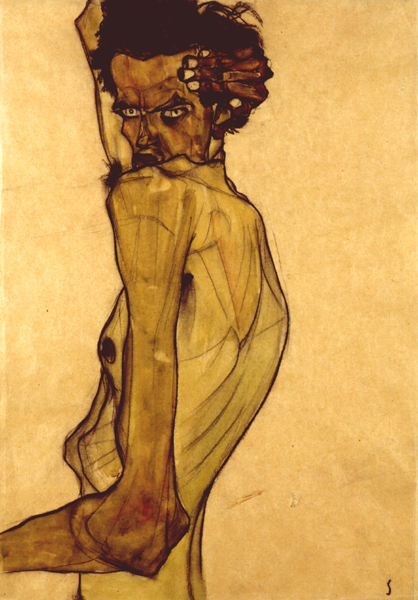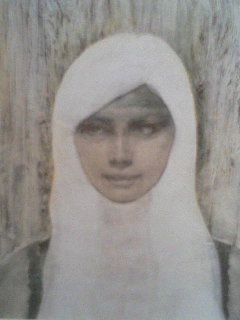|
Fri., January 20, 2012.
Yokohama museum of art
The dry-weather alert continued all the
time on that day, and it rained coldly to the dry Kanto district. I went
to Yokohama museum of art, after work in the center of Tokyo finished.
Only a few figures could be seen in the art museum because of the time of
5:00 of cold, the weather called rain, and a weekday. In being leisurely,
without being interfered by others, I was able to see the Matsui Fuyuko's
works and I was able to turn around me. The world of Matsui's pictures
does not suit the noise of a crowd, but since he would like to rather
confront each other by 1 to 1, it can be said that it was good
exactly. From now on, I will express here the
comment which appreciated the Matsui Fuyuko's exhibition ”Becoming Friends
with All the Children in the World”. The genre to which the Matsui Fuyuko's
works belong will call it a Japanese painting. In her works, full use of
the technique of various Japanese paintings is made, and it is drawn in
the style even with a pair of various hanging scrolls. However, although
her works use the technique of the Japanese painting, many points that the
composition and the way of thinking of pictures are drawn with the thought
of oil painting as Western pictures exist. Moreover, her works are
connected with what things other than a tale, message nature, symbolism,
and that pictures world they are, and the pictures world has not completed
it. The subject matter which this painter
likes and takes up is a thing which chops up a body, a ghost, and the body
and which is said to be grotesque. However, since it is easy to tell the
reason as a tale to which people can be convinced, her works have obtained
popular sympathy. This painter has chosen such a tendency intentionally. Because, the tale made by marketing behind her works are hidden. If it says from a reverse viewpoint and her work will be seen, the structural analysis according her work to marketing can be conducted. That is, there is fun in which those who look at her work imagine more is going on than really is freely. This is the most interesting point of her works. In relation to the
subject matter which the Matsui Fuyuko likes and takes up, the curator is
writing as follows in the exhibition catalog. ”She describes her strong
interest in violence, experience of loss, repression, stress, and trauma,
and she confides that her works derive from extremely personal motives. As
this suggests, the world of Matsui’s portrayal arises from her taking up
persecutory delusions, compulsion, narcissism and other human passions and
fixations, based on what she herself has heard and experienced, and
researching and endeavoring to paint the moments when these illnesses
produce abnormality or degenerate into insanity. Investigating what are
considered “abnormal” human perceptions and feelings, she has found themes
universal to all living beings ─ life and death, sex, self-love,
self-mutilation, self and the other, this world and the next, desire and
passions. It follows that her paintings are richly fertile in content and
lend themselves to varying interpretations. How are we to interpret
Matsui’s works? Sociologist Ueno Chizuko has written an essay discussing
this question from the perspective of feminism.” I do not deny what her
work is such a work. however, the thing -- I am not interested in the very
thing. Thus, I am interested in the structure where it is considered by
the curator. I am noting whether being pursued by a marketing view which
wrote this previously. It may be that people say that fine arts must be
beautiful. There is also a thing at which people make it frown also in
beauty. While 100 persons see and 99 persons bear a feeling of repulsion,
there is also beauty that only the remainder of one person is beautiful.
The beauty of her work is not such a thing, but is a thing of the kind
accepted more widely. Generally, that the
curator is writing by the comment cannot obtain an understanding widely by
a very individual thing. Her work is an exception of such generalities.
Her work generalized the element limited for maniacs if common so that an
ordinary young woman could receive. There is the dreadfulness of her work.
If it sees from another viewpoint, she will be widely accepted in many
people and will not ask only for the direction that it is beautiful. If
she pursues only this direction, her work will be only external beauty.
When her work was such a thing, comment like a curator's comment did not
come out. Her work makes those who see feel the reality of the human
existence beyond external beauty. Her work has the balance of Hazama of
the reality of making the special subject matter restricted to some
persons sublimate to universal beauty, if common, and the human existence
beyond external beauty. When she makes a work, she considers this balance
strategically. This is close to the strategy of the branding in a
marketing term. For example, it discriminated that a nude photo was erotic
and grotesque till a decade ago, and saw secretly in a place like a porno
shop which is not common. However, even if the male penis is reflected,
since it is of art and the sense is good, the photograph taken by
Mapplethorpe is decorated that there is no sense of incongruity in the
sitting room of an ordinary home. The reason is that Mapplethorpe's
photograph has the beauty of art from which other nude photos are
different. A bigger reason is that Brando called Mapplethorpe is making
people think that they are the special things different from a mere nude
photo. Matsui Fuyuko has taken such a measure against the work
scrupulously. What kind of thing is it concretely? Her work has not made
grotesqueness the theme. Her work makes the theme what is written to a
curator's comment. And her work is justifying the grotesque subject matter
that a thing grotesque as a means is required, in order to express the
theme. Since those who look at her work have a justifiable reason, they
look at an unavoidable grotesque thing as a not grotesque thing. And since
she did not dare to have avoided a grotesque subject matter for the theme
of a work, they are estimating that the Matsui winter child is great.
Although it may not be suitable as comparison, I will compare
with
Egon
Schiele (Left figure) who takes up the similar theme
and continued drawing a grotesque work throughout life. There are pity
which wounds itself, and an element to which their eyes are occasionally
made to be averted truly in his work. Even if those who looked at his work
do not want to see, it becomes impossible however, to let a screen out of
sight. Though regrettable, her work does not have such an
element. While looking at each
work, I would like to consider a concrete thing. Click the bottom and read
by a link. |




